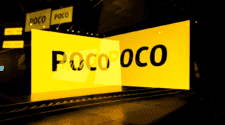The Middle East smartphone market has experienced a significant surge in growth, with shipments reaching 12.2 million units in the first quarter of 2024. This represents a year-on-year increase of 39%, marking a substantial rise from the previous year. This article discusses the key players in the market, the dynamics affecting their performance, and the shifting landscape in smartphone preferences among consumers in the region.

Robust Growth Amidst Challenges
According to a Canalys report released on June 17, the Middle East smartphone market (excluding Turkey) has shown impressive growth in the first quarter of 2024. The market saw an increase of 3.4 million units compared to the same period last year. This growth is driven by several factors, including the increasing adoption of smartphones, competitive pricing, and innovative features offered by emerging brands.
Honor, Transsion, and Xiaomi Lead the Growth
Three brands, in particular, have demonstrated remarkable growth rates:
1. Honor: With a year-on-year growth rate of 209%, Honor shipped 800,000 units in the first quarter, capturing a 7% market share. This significant increase is attributed to Honor’s strategic product launches and aggressive marketing campaigns.
2. Transsion: Transsion’s shipments rose by 194%, reaching 2.7 million units and securing a 22% market share. The brand’s Infinix series has been particularly popular, contributing to its rapid expansion in the region.
3. Xiaomi: Xiaomi shipped 2.3 million units, marking a 132% year-on-year growth and achieving a 19% market share. The success of Xiaomi’s Redmi Note 13 series has played a crucial role in its strong performance.

Market Rankings and Performance
Samsung: Market Leader Faces Decline
Despite being the market leader, Samsung faced challenges in Q1 2024. The brand shipped 3.1 million units, a 17% decrease year-on-year, resulting in a 25% market share. The decline in sales of Samsung’s low-end and mid-range A series models contributed to the overall drop in shipments. However, the high-end Galaxy S24 series, especially the Galaxy S24 Ultra, has performed well, accounting for a 66% share of Samsung’s high-end market sales.
Apple: High-End Focus Amid Declining Shipments
Apple also experienced a decline in shipments, with a year-on-year decrease of 14%. The company shipped 1.2 million units in Q1 2024, capturing a 9% market share. Despite the overall decline, the higher-end iPhone 15 Pro and iPhone 15 Pro Max have driven up the average selling prices for Apple in the region. This shift towards premium models highlights Apple’s focus on the high-end segment, catering to affluent consumers seeking advanced features and premium experiences.
Emerging Players: Expanding Footprints
Emerging players like Xiaomi, Transsion, and Honor are rapidly expanding their footprints in the Middle East:
Gizchina News of the week
- Xiaomi: The brand’s Redmi Note 13 series has been a major success, ranking third in sales in the region. Xiaomi’s strategy of offering high-quality features at competitive prices has resonated well with consumers.
- Transsion: With its Infinix series, Transsion has aggressively expanded in the Middle East, capitalizing on the demand for affordable smartphones with robust features.
- Honor: Honor’s multi-segment product launches have targeted the Saudi Arabian market effectively, helping it secure the fifth spot in shipments.

Changing Market Dynamics
High-End Focus for Samsung and Apple
Both Samsung and Apple are shifting their focus towards high-end models to maintain their market positions. The success of Samsung’s Galaxy S24 Ultra and Apple’s iPhone 15 Pro series has highlighted the growing demand for premium smartphones among consumers in the Middle East. This trend is driving up the average selling prices for these brands, as they cater to a niche segment that prioritizes cutting-edge technology and superior performance.
Competitive Strategies of Emerging Brands
Emerging brands like Xiaomi, Transsion, and Honor are employing competitive strategies to gain market share. Xiaomi’s focus is on delivering value through its Redmi series. However, Transsion is aggressively expanding with the Infinix brand. Furthermore, Honor’s product launches in multiple price segments are reshaping the market dynamics. These brands are leveraging their understanding of local consumer preferences to offer compelling products that meet the needs of a diverse customer base.
Motorola’s Entry into the Middle East Market
Motorola is also making moves to enter the Middle East market by establishing contacts with retailers in Kuwait. This strategy indicates Motorola’s intention to tap into the growing demand for smartphones in the region. Furthermore, it offers consumers additional choices and increases competition among brands.
Analyst Insights
Manish Pravinkumar, an analyst, commented on the challenges faced by Samsung and Apple in the region. He noted that the decline in sales of Samsung’s low-end and mid-range models has impacted the brand’s overall shipments. However, the high-end Galaxy S24 series has emerged as a strong performer, especially the Galaxy S24 Ultra, which has become the main sales force for the series.
Pravinkumar also highlighted Apple’s situation, where the higher share of iPhone 15 Pro and iPhone 15 Pro Max sales has led to an increase in average selling prices. This focus on premium models indicates a strategic shift towards catering to affluent consumers who demand top-tier features and performance.
Conclusion
The Middle East smartphone market has seen significant growth in the first quarter of 2024, with shipments increasing by 39% year-on-year. While Samsung and Apple continue to face challenges, emerging brands like Xiaomi, Transsion, and Honor are capitalizing on the evolving market dynamics. These brands are leveraging competitive pricing, innovative features, and targeted marketing strategies to capture market share.
As the market continues to evolve, the focus on high-end models by established players and the aggressive expansion of emerging brands will shape the future of the smartphone industry in the Middle East. Consumers can expect a wider range of choices and advanced features as brands vie for dominance in this rapidly growing market.





